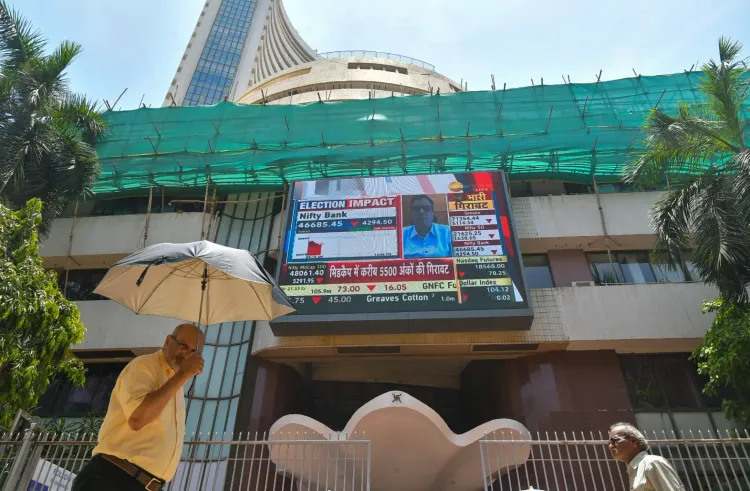Could the Sensex Reach 1 Lakh by July 2026?

Synopsis
Key Takeaways
- Sensex may reach 1 lakh by July 2026 in a bullish scenario.
- 30% chance of achieving this target based on favorable conditions.
- Key factors include RBI rate cuts and global trade improvements.
- Base-case scenario predicts a peak of 89,000.
- Bear case could see the index drop to 70,000.
Mumbai, Aug 4 (NationPress) A recent report suggests that the Sensex could achieve the remarkable 1 lakh milestone by July 2026 in a bullish scenario. This optimistic outlook, which holds a 30% likelihood, is attributed to several key factors: the RBI potentially reducing policy rates, a reversal of global trade tariffs, consistently low oil prices (below $65 per barrel), and unexpected positive government reforms, as noted by Morgan Stanley.
The firm indicates that a finalized trade agreement with the United States, increased capital expenditure announcements, swift loan growth, steady advancements in high-frequency data, and enhanced trade relations with China could serve as major catalysts for this substantial increase.
Moreover, factors such as robust population growth, a working democracy, macroeconomic stability-driven policies, and improved infrastructure will be crucial in propelling the index's growth, according to the report.
Even in a base-case scenario, with a 50% probability, Morgan Stanley projects the Sensex could reach an impressive 89,000 by July 2026. This projection is based on strong domestic investment, macroeconomic stability, continued fiscal consolidation, moderate growth in the US (free from recession), and stable oil prices, alongside a favorable trade agreement between the US and India.
Conversely, in a bear scenario with a 20% chance, the Sensex may decline to 70,000 by July 2026. Risks contributing to this downturn include a significant global economic slowdown, a recession in the US, aggressive monetary tightening by the RBI, and rising oil prices above $100 per barrel.
In light of deteriorating macroeconomic fundamentals, this scenario would likely exhibit slower earnings growth and a decline in valuations, as highlighted by the report.









